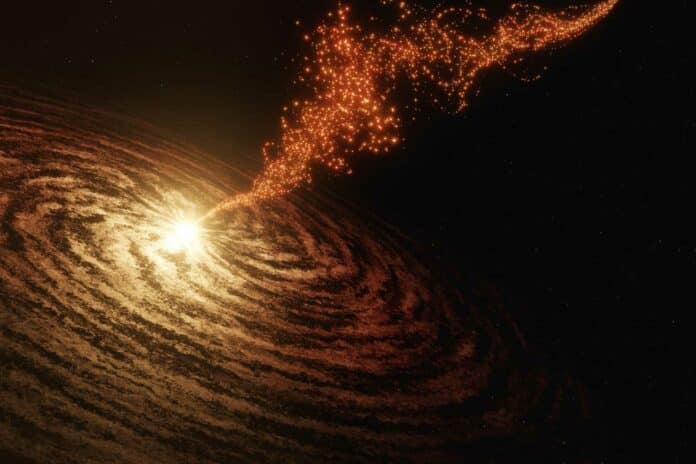New research using data from the James Webb Space Telescope suggests that black holes not only existed at the beginning of the universe but also played a role in creating new stars and forming galaxies.
Lead author Joseph Silk, a professor in the Department of Physics and Astronomy at Johns Hopkins University, explained that this discovery could change our understanding of how galaxies formed. “We know these monster black holes exist at the center of galaxies near our Milky Way, but the big surprise now is that they were present at the beginning of the universe as well and were almost like building blocks or seeds for early galaxies.
The study, published in the Astrophysical Journal Letters, analyzed distant galaxies from the early universe observed through the Webb telescope. These galaxies appeared much brighter than expected and contained unusually high numbers of young stars and supermassive black holes.
The findings challenge the conventional idea that black holes formed after the collapse of supermassive stars and that galaxies formed after the first stars appeared. Instead, the analysis suggests that black holes and galaxies coexisted and influenced each other’s development during the first 100 million years of the universe.
Silk’s team proposes that high-speed outflows from black holes accelerated star formation in the early universe. These outflows, generated by powerful magnetic fields around black holes, crushed nearby gas clouds, turning them into stars at a much faster rate than previously thought.
The team predicts that the early universe had two phases: during the first phase, black hole outflows accelerated star formation, and in the second phase, the outflows slowed down. Gas clouds collapsed due to magnetic storms from supermassive black holes, leading to the formation of new stars at a rapid rate.
“We thought that in the beginning, galaxies formed when a giant gas cloud collapsed,” Silk explained. “The big surprise is that there was a seed in the middle of that cloud—a big black hole—and that helped rapidly turn the inner part into stars at a rate much greater than we ever expected. And so the first galaxies are incredibly bright.”
Future observations with the Webb telescope are expected to confirm these calculations and provide more insights into the universe’s evolution.
“The big question is, what were our beginnings? The sun is one star in 100 billion in the Milky Way galaxy, and there’s a massive black hole in the middle, too. What’s the connection between the two?” he said. “Within a year, we’ll have so much better data, and many of our questions will begin to get answers.”
The study was supported by the Israel Science Foundation, the Asher Space Research Institute, and the Schmidt Futures program.
Journal Reference:
- Joseph Silk, Mitchell C. Begelman, Colin Norman, Adi Nusser, and Rosemary F. G. Wyse. Which Came First: Supermassive Black Holes or Galaxies? Insights from JWST. The Astrophysical Journal Letters. DOI: 10.3847/2041-8213/ad1bf0
